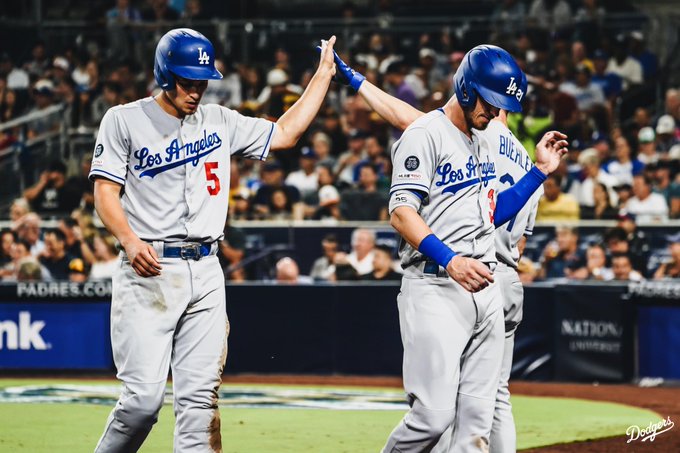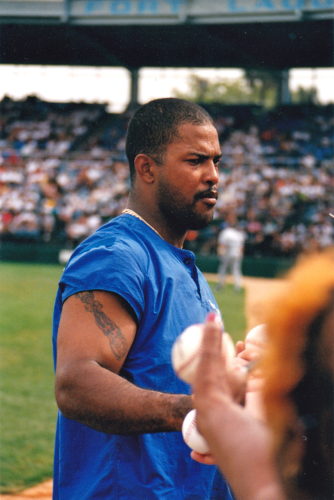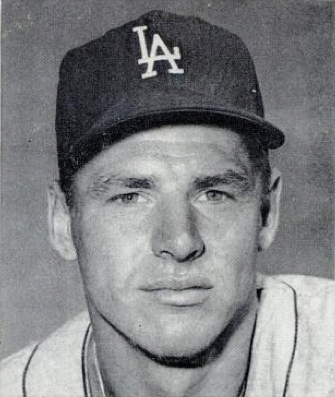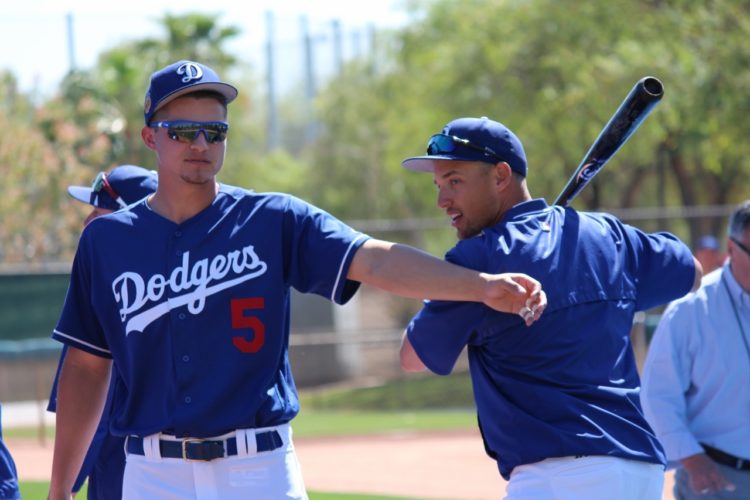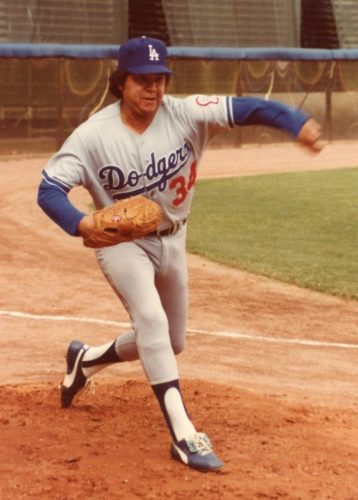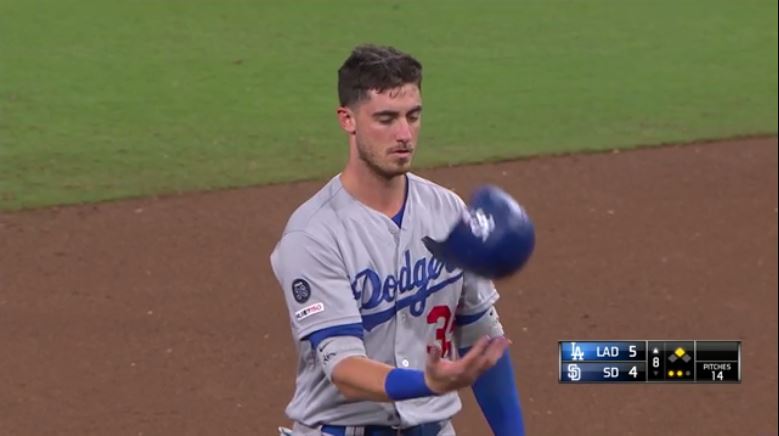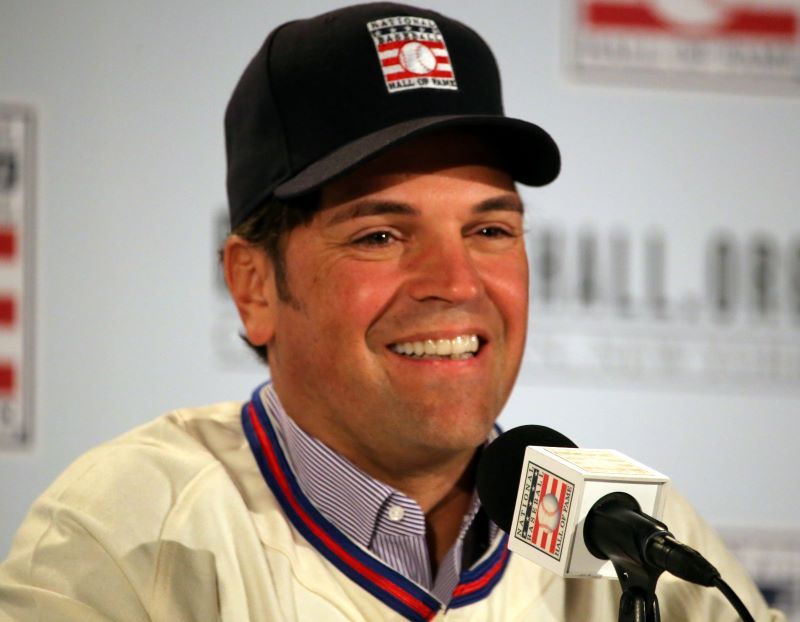After running through the first seven NL Rookies of the Year for the Los Angeles Dodgers last time, I’ll finish up with the second set of seven here.
As I said before, I am probably biased toward some players from recent memory as opposed to guys I’ve only read about from the 1960s. Again, these are based on how impressive the seasons were, as well as how deserving they appeared to be against the other vote getters.
7. Raul Mondesi, 1994
.306/.333/.516/.849 .210 ISO, 16 HRs, 56 RBIs, 17.2 K%, 122 wRC+, 1.8 WAR
This is where it gets a little tougher for me, with Mondesi possibly overvalued a bit. He probably could have been near the end of the previous post or maybe even one spot higher here.
The third winner in the run of five straight, Mondesi took the award unanimously with all 28 first-place votes and 140 points. The names behind Mondesi didn’t have a clear claim to the award either, with John Hudek, Ryan Klesko and Steve Trachsel all ending up with point totals in the 20s.
After playing in 42 games with 91 PAs during the 1993 season, Mondesi became the everyday right fielder in the strike-shortened season of 1994. Tied for 44th in wRC+ and t-50th in OPS, Mondesi ranked just outside the top-10 right fielders in the league (behind an incredibly stacked group that included Tony Gwynn, Larry Walker, Moises Alou, Gary Sheffield, Paul O’Neill, Kirby Puckett and Sammy Sosa).
Klesko slashed .278/.344/.563/.907 with 17 homers and 47 RBIs in 276 PAs, but Mondesi’s totals in nearly 200 more PAs gave him the edge.
6. Frank Howard, 1960
.268/.320/.464/.784, .196 ISO, 23 HRs, 77 RBIs, 22.2 K%, 110 wRC+, 2.0 WAR
Tied for 38th in wRC+, 34th in OPS and 20th in ISO, Howard’s numbers are a good example of what the offensive numbers of the 1960s looked like. It led him to receive 12 first-place votes for the Rookie of the Year award, beating out four others who landed on the final ballot. Philadelphia’s Pancho Herrera and Art Mahaffey finished second and third with four and three first-place votes, respectively, while their team finished 59-95 (Howard’s teammate Tommy Davis earned one vote as well).
Herrera was already 26 in 1960, compared to the 23-year-old Howard, and slashed .281/.348/.455/.803 with a 118 wRC+. However, he committed 15 errors between first and second base, while Howard finished with just four between first, left and right.
Howard finished 10th among outfielders in homers, and inside the top 25 in WAR and wRC+. All these preceded what ended up as an impressive career for the Dodgers and Senators, with seven seasons with at least 3.4 WAR.
5. Hideo Nomo, 1995
2.54 ERA/2.89 FIP, 191 1/3 IP, 30.3 K%, 13-6, 5.2 WAR
Debuting in the United States at 26 years old, Nomo trailed only Randy Johnson in strikeouts (294 to 236) and K% (34.0% to 30.3%) as he dominated the National League in his first run through the league.
Surprisingly, Nomo finished fourth in the NL Cy Young voting even though Greg Maddux was the only clear cut pitcher ahead of him (and who earned all first-place votes). Of course, Nomo had enough trouble holding off Chipper Jones for Rookie of the Year as he edged him with 18 first-place votes and 118 points to 10 and 104 for the Braves’ third baseman.
For what it is worth, Jones slashed .265/.353/.450/.803 with a 112 wRC+ and 2.9 WAR. Those numbers are fine, but clearly shouldn’t have come close to Nomo given the generation of hitters in the league. Nomo’s ERA and FIP each finished third in the majors, and his WAR ranked fourth while his innings total landed down at 32nd.
4. Corey Seager, 2016
.308/.365/.512/.877, .204 ISO, 26 HRs, 72 RBIs, 19.4 K%, 136 wRC+, 6.9 WAR
These last four are pretty tough, but Seager’s season surprised me in how some of the numbers matched up closely with Howard if you consider the difference in the league more than 50 years apart. It is pretty likely Seager would rank as the best Rookie of the Year winner for most other franchises, so this is really proof of just how strong some of these seasons were. Especially considering Seager earned all 30 first-place votes over Trea Turner, teammate Kenta Maeda and Trevor Story.
While his UZR was 6.5, Seager’s DRS was -7 in 2016 at shortstop before taking a step forward in the categories in 2017. Even with that, his WAR finished fifth in the league while some of his other offensive numbers (OPS, 25th and wRC+, 15th) ranked just around the top 25.
This really could be too low, but between the astronomical numbers of the top two and the general impact of the next one on the list, I’m not sure where else Seager can land here.
3. Fernando Valenzuela, 1981
2.48 ERA/2.44 FIP, 192 1/3 IP, 23.7 K%, 13-7, 4.9 WAR
.250/.262/.281/.543, 55 wRC+, 0.4 WAR
When you look at Valenzuela’s line compared to Nomo’s from their rookie seasons, the numbers are pretty close other than the latter’s insane strikeout percentage.
The difference of course is Valenzuela’s Cy Young Award, top-five finish in the MVP voting and most importantly the Dodgers’ World Series victory over the Yankees. The Opening Day starter also started five playoff games, and Valenzuela finished with a 2.21 ERA in 40 2/3 innings culminating in a complete game victory in Game 3 of the World Series.
The only competition for Rookie of the Year was Tim Raines, who earned six first-place votes with 85 points, behind Valenzuela’s 17 and 107. The Cy Young voting was even closer, with the Dodgers’ rookie beating out Tom Seaver by just three points, 70-67, as they tied with eight first-place votes apiece.
Leading the NL in innings pitched, the 20-year-old Valenzuela finished second in WAR, fifth in FIP and 10th in ERA. But his K% and K-BB% leading the league seems like it set him apart for both awards.
2. Cody Bellinger, 2017
.267/.352/.581/.933, .315 ISO, 39 HRs, 97 RBIs, 26.6 K%, 138 wRC+, 4.0 WAR
Seager ended up with about 150 more PAs than Bellinger in about 25 more games, but the latter’s power in his rookie season puts him higher on the list. Bellinger only came in at ninth in MVP voting, but his ISO and homer run total finished fifth in the league.
Just like Seager, Bellinger came away with all 30 first-place votes for Rookie of the Year ahead of eight others who received votes. Paul DeJong, Josh Bell and Rhys Hoskins all ended up with pretty solid seasons themselves, but Bellinger’s was well ahead of the first two, while Hoskins only had 212 PAs (though he did hit 18 home runs in them).
Bellinger also became the first Dodger rookie to hit for the cycle, and 10 of his home runs came in a 10-game span, a run that included three two-homer games with a pair coming on back-to-back days.
Most of Bellinger’s line from 2017 should top all other rookies in Los Angeles’ history, but the top Dodger rookie is likely among the top 10 in league history.
1. Mike Piazza, 1993
.318/.370/.561/.932, .243 ISO, 35 HRs, 112 RBIs, 14.3 K%, 150 wRC+, 7.4 WAR
Yet another unanimous winner in Dodger history, Piazza earned all 28 first-place votes to finish with 140 points. Second-place finisher Greg McMichael earned just 40 points with a 2.06 ERA in 91 2/3 innings to earn 19 saves for the Braves.
Piazza finished ninth in the MVP race, the first of five straight seasons of landing in the top 10 of the award’s voting. Ninth is probably way too low, as Piazza’s WAR finished fourth and his wRC+ tied for eighth in all of baseball. No NL catcher came even close to Piazza during the season, landing 2.1 WAR ahead of Phillies catcher Darren Daulton.
Drafted in the 62nd round of the 1988 draft, Piazza’s rookie season came after just four years in the minors. While he would reach 4.5 WAR in eight seasons, only 1997’s 9.1 WAR season topped his rookie year according to FanGraphs. Not only is Piazza’s rookie season the best in Los Angeles Dodgers history, it is likely among the top 15 or 20 offensive seasons by a catcher in baseball history.
 Dodgers Digest Los Angeles Dodgers Baseball Blog
Dodgers Digest Los Angeles Dodgers Baseball Blog
